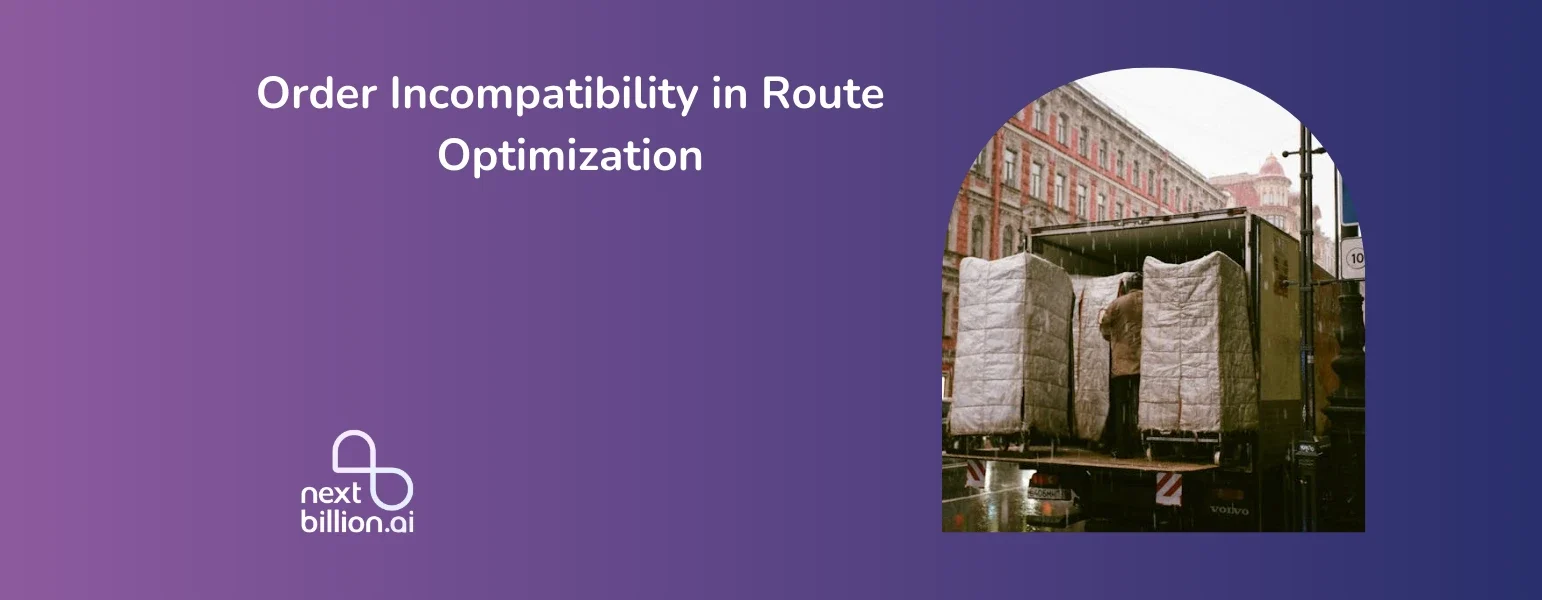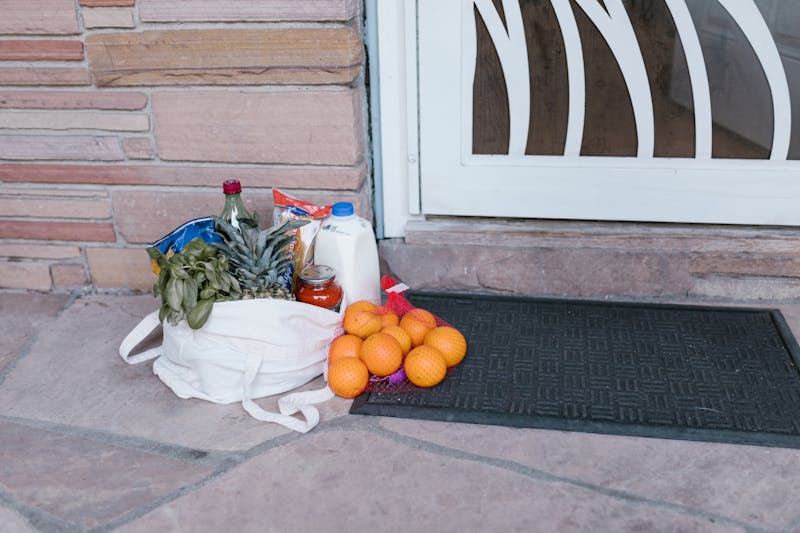
Table of Contents
Table of Contents
In logistics, Order Incompatibility refers to situations where certain items can’t be transported together due to size, weight, or special handling requirements. Ignoring these constraints can lead to damaged goods, safety risks, or legal issues. Understanding order incompatibility helps businesses optimize routes, reduce costs, and improve delivery efficiency. By addressing these challenges early, companies can ensure smoother operations and higher customer satisfaction.
Practical Applications of Order Incompatibility
1. Chemical and Hazardous Material Transportation
In the chemical and hazardous materials industry, transporting incompatible substances together can lead to dangerous reactions. For instance, flammable materials should not be transported with corrosive liquids or bases, as this could result in fire or chemical spills. The order incompatibility feature ensures that these substances are transported separately, reducing the risk of accidents. It also helps companies comply with safety regulations like the Hazardous Materials Transportation Act (HMTA), which mandates the safe handling and transport of dangerous goods.
2. Food and Beverage Delivery
Delivering food and beverages alongside non-food items, such as cleaning chemicals, poses a significant risk of contamination. For example, cleaning agents mixed with food products can cause spoilage or make the food unsafe for consumption. The order incompatibility feature ensures that food and beverage orders are segregated from non-compatible goods, protecting the integrity of the food and preventing health risks. This is essential for maintaining quality and adhering to food safety standards.
3. Pharmaceutical and Medical Supply Delivery
In the pharmaceutical industry, it is critical to transport medicines and medical supplies separately from hazardous materials like bio-waste or cleaning chemicals. Mixing these materials can compromise the safety and effectiveness of the medications. The order incompatibility feature helps to keep medications, medical devices, and biohazardous materials isolated during transportation, ensuring the safety of both the supplies and the end users. This is particularly important for maintaining the efficacy of temperature-sensitive medications and sterile equipment.
4. Waste Management and Recycling
Waste management operations involve collecting various types of waste, including household waste, hazardous waste, and recyclables. Mixing hazardous materials with general or recyclable waste can lead to contamination and environmental hazards. The order incompatibility feature ensures that different waste streams are kept separate, allowing for safer transport of hazardous materials and improving the efficiency of recycling operations. This segregation minimizes the risk of dangerous chemical reactions and ensures compliance with waste disposal regulations.
5. Construction and Building Materials
Transporting construction materials often involves a mix of chemicals, metals, and other raw materials. For example, corrosive liquids should not be transported with metal components, as they can cause rust or damage to the materials. The order incompatibility feature allows businesses to designate these materials as incompatible, ensuring they are transported in a way that avoids damage. This not only protects the integrity of the construction materials but also ensures that vehicles remain safe for continued use.
6. Oil and Gas Industry
In the oil and gas sector, transporting incompatible fuels and chemicals together can result in contamination or even explosions. For example, mixing different types of fuels or lubricants could degrade the quality of the products and increase the risk of safety hazards. The order incompatibility feature helps in load planning by ensuring that incompatible substances are transported separately, adhering to industry safety standards and enhancing operational safety.
7. Cold Chain and Temperature-Sensitive Products
Cold chain logistics involve the transportation of temperature-sensitive goods like frozen food, medicines, or biological samples that require specific temperature controls. Mixing these items with goods that affect the temperature, such as heated items or non-sterile chemicals, can compromise their integrity. The order incompatibility feature ensures that temperature-sensitive products are transported in appropriate conditions, preventing spoilage, contamination, or degradation of medical supplies or biological samples. This is vital for maintaining product quality, especially in industries where precise temperature control is crucial.
What is the Feature of order incompatibility
The Order Incompatibility feature in route optimization allows users to define specific load types for each order and designate which types are incompatible for transportation together. This ensures that mutually incompatible loads are never assigned to the same vehicle, improving safety, compliance, and product quality during transit.
For instance, if a trader transports iron sheets, corrosive liquids, glass, fibers, packaging materials, and adhesives, they can set specific incompatibility rules. Corrosive liquids shouldn’t be transported with iron sheets, as it could cause corrosion or damage. Similarly, adhesives shouldn’t be loaded with packaging materials to avoid potential contamination. Glass and fibers should also be separated from iron sheets to prevent damage from shifting or contact during transit.
By specifying these incompatibility rules, the route optimization software ensures that vehicles are assigned orders in a way that avoids these risks. This feature is critical in industries like chemical, pharmaceutical, and hazardous materials transport, where regulatory authorities often require strict separation of certain load types to comply with safety standards.
This feature helps businesses avoid product degradation, safety hazards, and regulatory violations, making the entire logistics process more efficient and secure.
Are There Any Legal Requirements for Handling Incompatible Goods?
Yes, handling incompatible goods is subject to strict legal regulations across multiple industries to ensure safety and compliance. These regulations mandate the segregation of incompatible materials during transportation, making it crucial for route planning and logistics operations.
1. Chemical and Hazardous Materials Transportation
The U.S. Department of Transportation (DOT) enforces the Hazardous Materials Regulations (HMR), which prohibit the transportation of incompatible hazardous materials together. For example, 49 CFR §177.848 provides segregation tables specifying which ha“zardous materials, such as acids and flammable liquids, must be separated. Non-compliance can lead to chemical reactions, fires, or explosions, making adherence to these regulations critical for industries like chemical transport, waste management, and oil and gas.
2. Food and Beverage Industry
In the U.S., the Food Safety Modernization Act (FSMA) requires food products to be transported separately from non-food items, especially hazardous chemicals, to prevent contamination. The Sanitary Transportation of Human and Animal Food regulation specifically prohibits mixing food with incompatible substances, safeguarding public health and product integrity. This impacts the grocery, food delivery, and restaurant industries, where safe food handling is paramount.
3. Waste Management and Recycling
The U.S. Resource Conservation and Recovery Act (RCRA) governs the transportation of hazardous waste, requiring that incompatible waste types, such as corrosive and reactive materials, be segregated to prevent environmental hazards or accidents. Waste management companies must follow these guidelines to safely transport industrial and household hazardous waste.
These regulations highlight the critical need for route optimization systems to include features that handle order incompatibility, ensuring compliance and safety across industries.
NextBillion.ai’s Route Optimization offers a robust Order Incompatibility feature, ensuring safe cargo handling by preventing incompatible goods from being transported together. Once load types and their incompatibilities are defined, the system generates optimized route plans, ensuring that vehicles carrying one type of load are not assigned to conflicting cargo. This solution is ideal for businesses managing multiple types of deliveries, improving safety, compliance, and operational efficiency in logistics operations.
About Author
Rishabh Singh
Rishabh Singh is a Freelance Technical Writer at NextBillion.ai. He specializes in Programming, Data analytics and technical consulting, turning complex tech into clear and engaging content.
Ready to get started?
Related Posts


Skill-Based Routing in Route Planning and Dispatch











